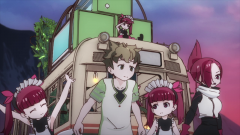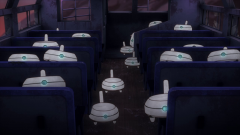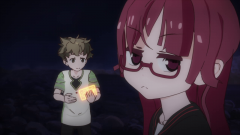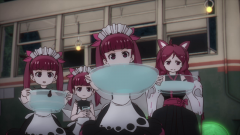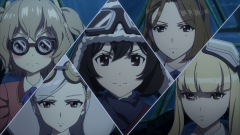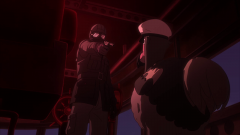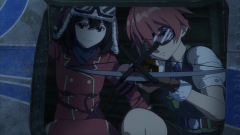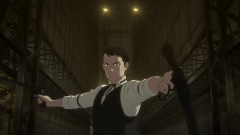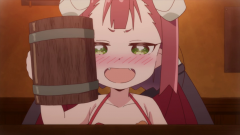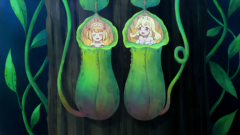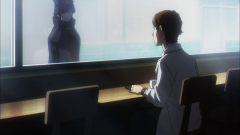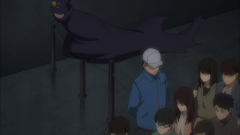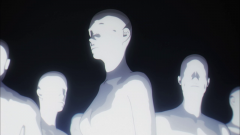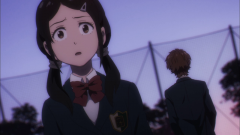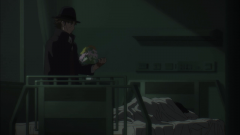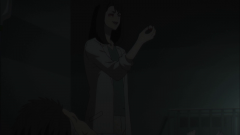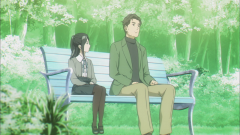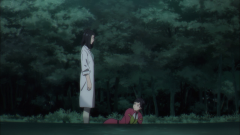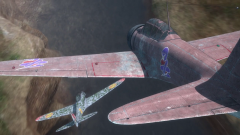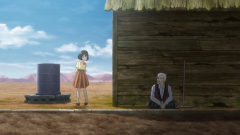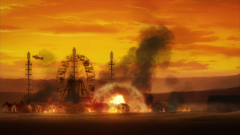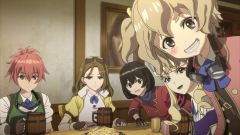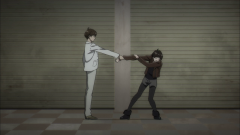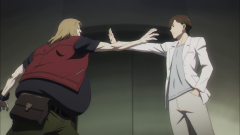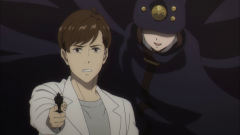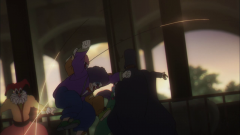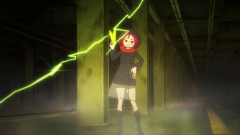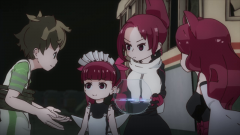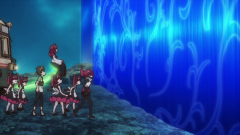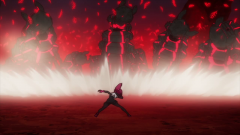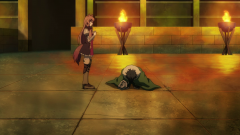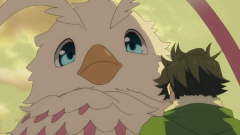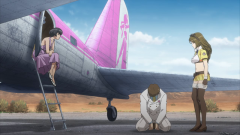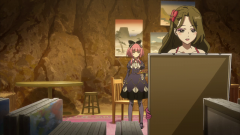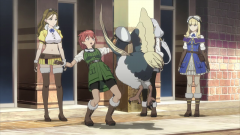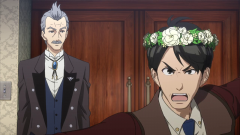Welp, I don’t think I have taken that long break before since I started blogging. My life has been busier than usual lately and I also feel a little bit burnt out from blogging lately. Writing can be a pain sometimes. Hopefully this is just a temporary slump because I’m not intending to stop blogging anytime soon. Now let’s get back to the last three episodes of Kemurikusa where the world-building remains just as intriguing, the characters getting slightly better and we still have absolutely no idea where the whole journey is going to end. I was certainly taken aback by Kemurikusa’s decision to skip over the big cliffhanger at the end of episode 7. There were an army of Red Bugs and the sea of Red Mist after all, and all it took is 3 seconds into episode 8. Now, upon reflection, while that skip is definitely jarring and affects my suspension of disbelief quite a bit, it does fit with the kind of story Kemurikusa is trying to tell. It’s more about the characters’ relationship and how they figuring out that worldbuilding together, not about them fighting red bugs. Wakaba has gotten full trust from the girls right now, but the star(s) of episode 8 are those little white bugs. They themselves have their own sad stories: products that no longer have any purpose, a bunch of sad sacks who live because they can’t die. Just for a 5 minute duration, these adorable bugs sacrifice themselves because at least they die knowing that their lives have a purpose.
In episode 9, Wakaba encounters the other 2 supposedly-deceased sisters, Ryo the fighter and Ryoku the tsundere scholar. These girls’ personalities are fun and distinctive enough that they make a good impression and clearly stand out on their own. Ryo is hyperactive and has an acute sense of smell (the five sense motif is running strong here), whereas Ryoku is the mind, the one with knowledge (and a written diary). One interesting fact is that these girls are from the same body in which one personality emerges at the time. This could mean that either they are just a hallucination of Wakaba (the others haven’t seen them at all), or they are using the same leaf right now, and for whatever reasons they don’t want to meet their sisters (my big guess is simply because they can’t). In episode 10 we also learn an important detail: the flashback through the point of view of the First Person, who turns out to be a child as well. Whatever written in the memory leaf, or moreso, whatever erased in the leaf written by the First Person, will serve as a big revelation for these next few episodes.
As their journey has gotten into its last leg, it’s almost unavoidable to see the team members apart. I mean, it fits neatly to the hopeless tone of their situations and the dark grim nature these girls are in, and although I could see where it was going with all the “this is the last time” scenes, the time where they part way is still goddamn heartfelt. Rin and Ritsu have their final farewell when Ritsu reaffirms how glad that she is Rin and Rina’s older sister, and the part where they decide to stay behind while slowly withering away strikes the right chore emotionally. In a wasteland world where there’s only destruction and everything resembling life will eventually vanish, it’s the fondness and the love from the sisters that will always remain. Even for Rin, imagine saying goodbye to the home she used to and the very people she wanted to protect. The journey continues, but the presence of those lost souls still remain.

